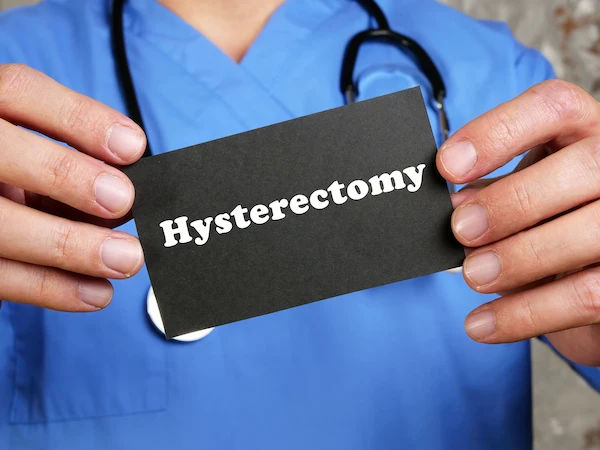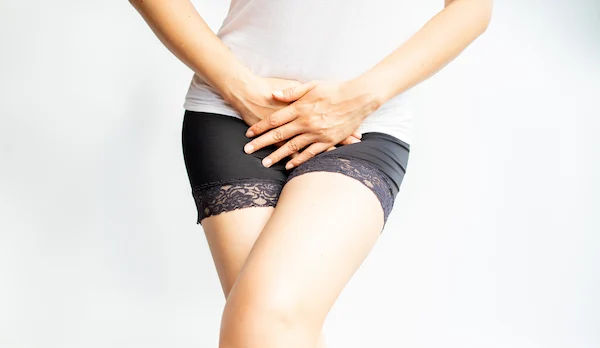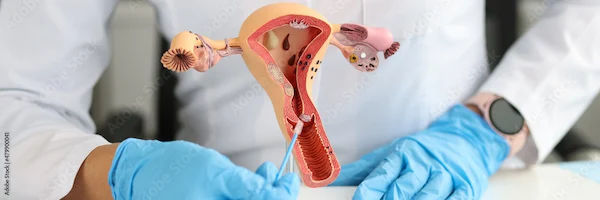Best Compression Garment After Hysterectomy
Recovering from a hysterectomy? Discover how compression garments support healing, reduce pain, and improve comfort. Learn how to choose the best one for your needs.

Written by
Last updated on 21st Jul, 2025

Introduction
A hysterectomy is a major surgery that involves the removal of the uterus, and sometimes other reproductive organs. Recovery can take time, and one way to support your healing process is by wearing a compression garment. These garments provide gentle pressure to the abdominal area, helping with swelling, pain, and overall comfort.
This guide explains why compression garments are recommended after a hysterectomy, what features to look for, and how to select the most comfortable and supportive option.
Why Wear a Compression Garment After Hysterectomy?
After surgery, your body goes through a healing process that can involve swelling, tenderness, and muscle weakness. A compression garment can help by:
1. Reducing Swelling (Oedema) – Gentle pressure helps prevent fluid buildup, which is common after surgery.
2. Providing Support – It holds the abdominal muscles in place, reducing strain when moving.
3. Improving Blood Circulation – Better circulation promotes faster healing.
4. Reducing Pain – The snug fit can minimise discomfort by stabilising the surgical area.
5. Encouraging Proper Posture – It helps you stand and sit straighter, preventing unnecessary strain.
Consult Top Specialists for Personalised Care
What to Look for in a Compression Garment
Not all compression garments are the same. Here’s what to consider when choosing the best one:
1. Type of Garment
- Different styles provide different levels of coverage and support.
- Abdominal Binder – A wide band that wraps around the midsection, providing firm support.
- Post-Surgical Girdle – Offers full coverage from waist to hips, with adjustable straps.
- High-Waisted Compression Shorts – Provides support while being discreet under clothing.
2. Material
- Look for breathable, stretchable fabric like cotton blends or medical-grade elastic.
- Avoid materials that cause irritation or excessive sweating.
3. Adjustability
- Hook-and-eye closures or Velcro straps allow for a customised fit as swelling changes.
- Avoid garments that are too tight—they should be snug but not painful.
4. Compression Level
- Light to moderate compression is usually best for post-hysterectomy recovery.
- Avoid medical-grade compression unless prescribed by a doctor.
5. Comfort & Ease of Use
- Choose a garment that is easy to put on and take off.
- Seamless designs reduce irritation on sensitive skin.
How to Choose the Right Compression Garment
Selecting the best garment involves more than just picking a size—it should suit your medical and personal needs.
1. Consult Your Doctor – Some surgeons recommend specific brands or types.
2. Measure Accurately – Follow sizing guides to ensure a proper fit.
3. Prioritise Comfort – If it feels too tight or causes discomfort, try a different style.
4. Consider Your Lifestyle – If you’re active, a flexible, breathable option may work best.
Tips for Wearing a Compression Garment
Wearing your garment properly can make your recovery smoother. Here’s how to make the most of it.
- Start Wearing It as Advised – Some doctors recommend wearing it immediately after surgery, while others suggest waiting a few days.
- Wear It for the Recommended Time – Typically, 6-8 weeks post-surgery, but follow your doctor’s advice.
- Take Breaks if Needed – Remove it if you experience numbness, tingling, or excessive discomfort.
- Wash It Regularly – Follow care instructions to maintain elasticity and hygiene.
When to Avoid Compression Garments
While beneficial for many, compression garments aren’t ideal in every case. Always check with your doctor before using one, especially if you have any pre-existing conditions.
Avoid wearing a compression garment if you:
- Have poor blood circulation or a condition like deep vein thrombosis (DVT).
- Are managing skin infections or unhealed wounds near the surgery site.
- Notice that swelling increases or pain worsens while wearing the garment.
Final Thoughts
A good compression garment can make a big difference in your hysterectomy recovery by reducing pain, swelling, and discomfort. Choose one that fits well, feels comfortable, and meets your needs.
If you’re unsure which garment is right for you, consult your doctor or a specialist. You can also book a consultation through Apollo 24|7 for personalised advice.
Consult Top Breast Surgeons
Consult Top Breast Surgeons

Dr. Jayanti Thumsi
Breast Surgeon
21 Years • MBBS,MS,Clinical Attachment
Bengaluru
Apollo Hospitals Bannerghatta Road, Bengaluru
(200+ Patients)

Dr. Jayanti Thumsi
Breast Surgeon
21 Years • MBBS,MS,Clinical Attachment
Bengaluru
Apollo Hospitals Sheshadripuram, Bengaluru

Dr. Ashwini R K
Breast Surgeon
5 Years • MBBS, MS(General Surgery), FMAS, Fellowship in Breast Cancer
Bengaluru
Apollo Cancer Centres, Electronic City, Bengaluru

Dr. Anup Dhir
Plastic Surgeon
38 Years • MBBS, MS, MCh (Plastic & Reconstructive Surg.), FECSM
Delhi
Apollo Hospitals Indraprastha, Delhi

Dr. Aniket Dave
Plastic Surgeon
8 Years • MBBS, MS (General Surgery), MCh (Plastic and Reconstructive Surgery)
Ahmedabad
Apollo Hospitals - Gandhinagar, Ahmedabad, Ahmedabad
Consult Top Specialists for Personalised Care

Dr. Jayanti Thumsi
Breast Surgeon
21 Years • MBBS,MS,Clinical Attachment
Bengaluru
Apollo Hospitals Bannerghatta Road, Bengaluru
(200+ Patients)

Dr. Jayanti Thumsi
Breast Surgeon
21 Years • MBBS,MS,Clinical Attachment
Bengaluru
Apollo Hospitals Sheshadripuram, Bengaluru

Dr. Ashwini R K
Breast Surgeon
5 Years • MBBS, MS(General Surgery), FMAS, Fellowship in Breast Cancer
Bengaluru
Apollo Cancer Centres, Electronic City, Bengaluru

Dr. Anup Dhir
Plastic Surgeon
38 Years • MBBS, MS, MCh (Plastic & Reconstructive Surg.), FECSM
Delhi
Apollo Hospitals Indraprastha, Delhi

Dr. Aniket Dave
Plastic Surgeon
8 Years • MBBS, MS (General Surgery), MCh (Plastic and Reconstructive Surgery)
Ahmedabad
Apollo Hospitals - Gandhinagar, Ahmedabad, Ahmedabad


